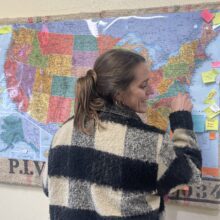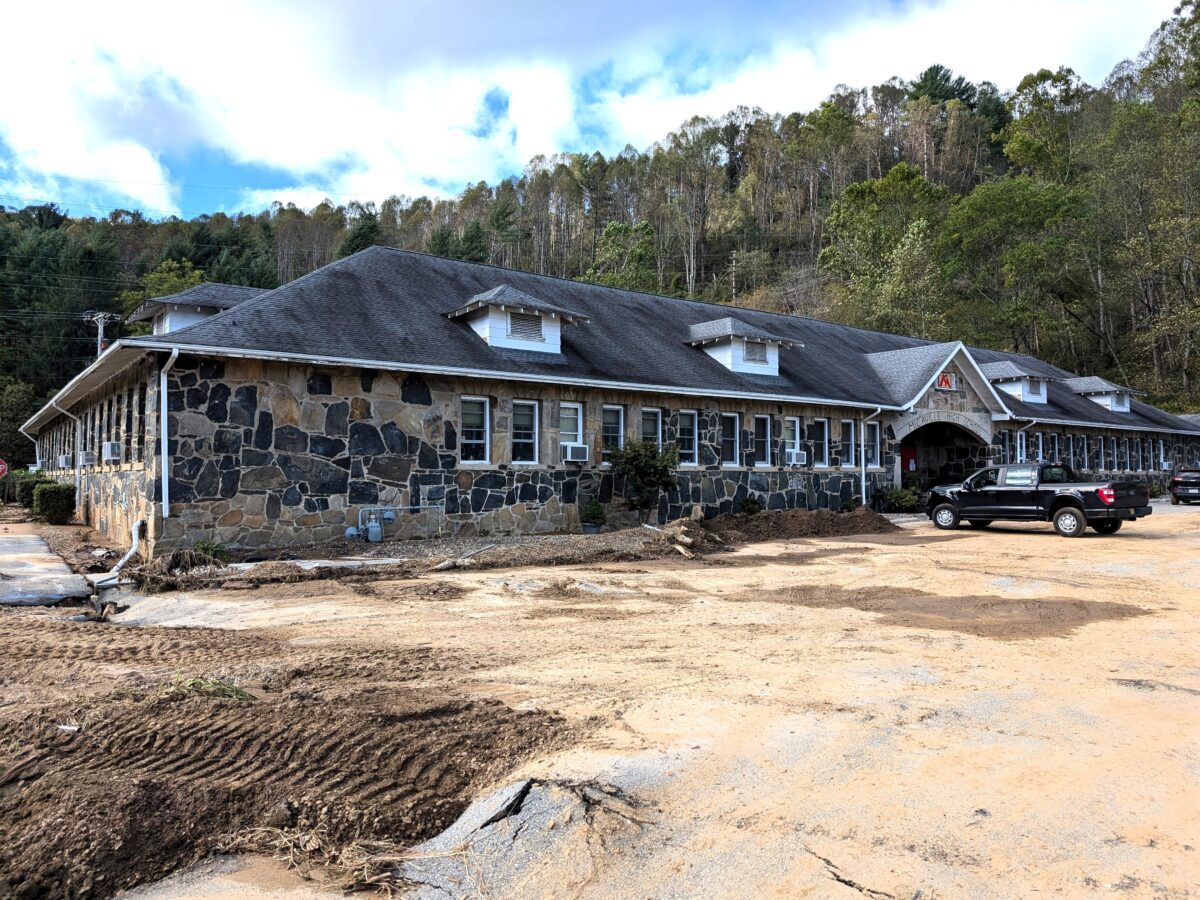
|
|
Due to the unprecedented flooding from Hurricane Helene in September 2024, four school buildings in western North Carolina flooded so severely that students were unable to immediately return to school.
Some schools closed temporarily and are back in their buildings, and some are still in transition while awaiting a more permanent home. EdNC spoke with each school district’s superintendent to learn about the status of the buildings and how their school communities look a year after Helene.
![]() Sign up for the EdWeekly, a Friday roundup of the most important education news of the week.
Sign up for the EdWeekly, a Friday roundup of the most important education news of the week.
Henderson County
Atkinson Elementary School in Henderson County Public Schools (HCPS) is split by Perry Creek. The gym sits on one side of the creek, the school building on the other. Helene dumped 21.96 inches of rain in Hendersonville, the creek swelled, and both buildings took on two inches of water.
Dr. Mark Garrett, superintendent of HCPS, was no stranger to flooding before Helene. As a principal, he had dealt with water in schools, and during his tenure as the superintendent in McDowell County, he’d faced other natural disasters.
“I think the most challenging part of last year was just dealing with a disaster the magnitude of what we had,” Garrett said. “You sort of think, you know what may or may not be coming, but something of this magnitude — it’s really not anything you can be prepared for.”
Replacing the floors was the largest task before getting students back in the building. Atkinson Elementary needed somewhere to go, and the local Boys & Girls Club of Henderson County rose to the occasion by welcoming the entire student body into their facility.


To mitigate flooding in the future, Garrett said Atkinson Elementary is trying to address things within its control. The school wants to increase vegetation in certain areas on campus and fix drainage issues. Thanks to the newly installed flooring, which is sturdier and can be cleaned up more easily if water returns, the school is better prepared for future flooding.
Atkinson Elementary operated out of the Boys & Girls Club until December 2024, when the new floors were completed. Garrett and HCPS were able to welcome Atkinson Elementary back to its building before Christmas.
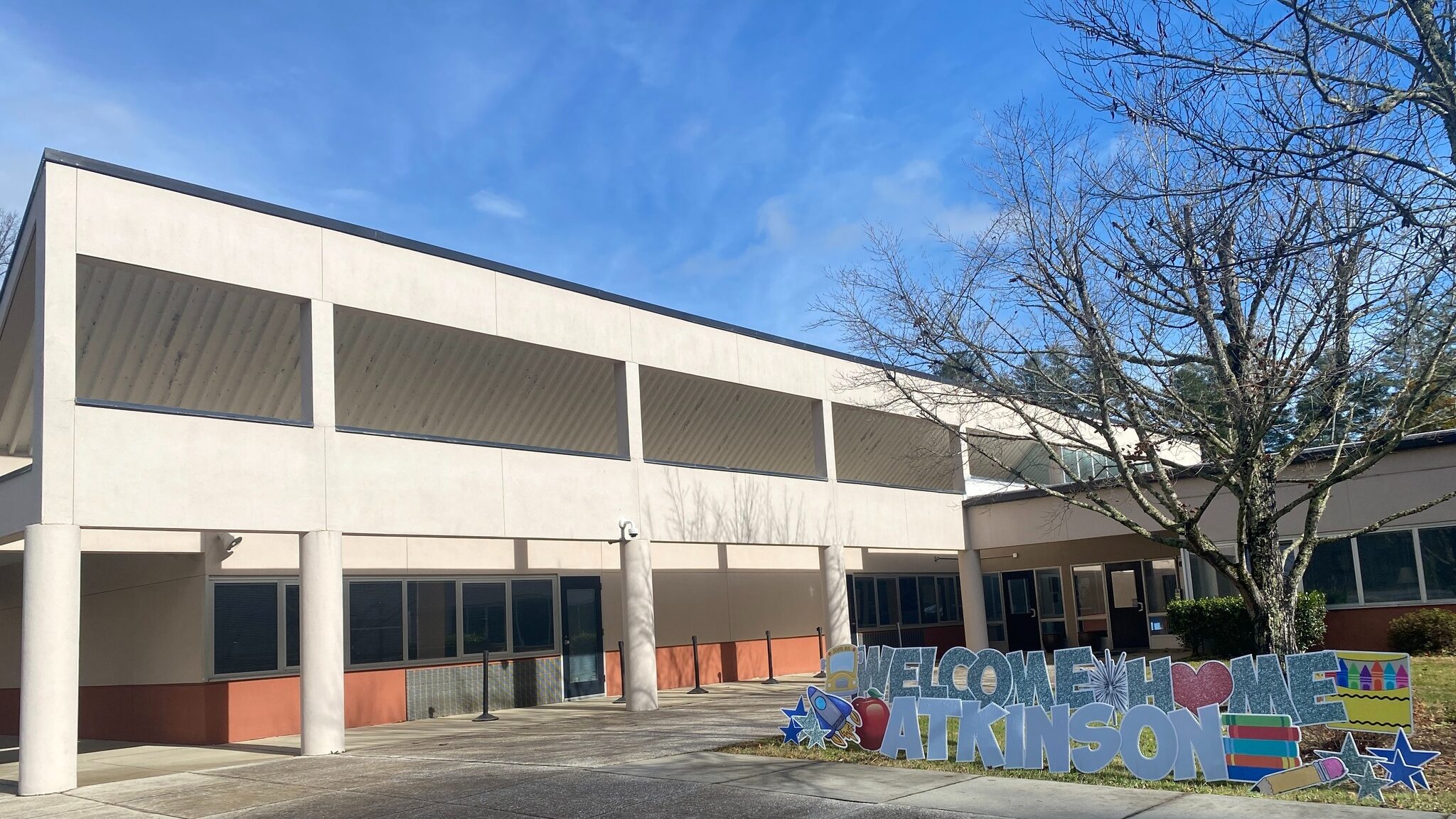
The strong partnership between the school and the community organization allowed for a seamless transition. Atkinson Elementary didn’t have to ask; they were offered the space. And the relationship with the Boys & Girls Club did not end once students returned to the school building.
Through a grant, the Boys & Girls Club can embed five mentors at various HCPS elementary schools during the day. With student families now familiar with the services of the Boys & Girls Club due to last year’s relocation, the organization added a transportation stop to pick up students from Atkinson and bring them to the club for after-school programming.
The district’s preexisting relationship with the Boys & Girls Club was crucial in the aftermath of the storm, Garrett said. In the event of future emergencies, Garrett said these community partnerships are vital. “I can’t emphasize (it) enough: Make sure that you know your neighbors, and you know your community partners, and you know these other agencies ahead of time,” Garrett said.
“It’s amazing what you can do when you don’t worry about who gets the credit,” Garrett said. He firmly believes, “When you do what’s right for students, it’ll be what’s right for everybody else.”
McDowell County
Old Fort received 15.55 inches of rain over three days last September. Mill Creek, which sits behind Old Fort Elementary School (OFES), was overtaken by water and flooded the school. The building was closed for repairs until the 2025-26 school year. While they waited, students merged with nearby Pleasant Gardens Elementary School (PGES).
The most important thing to OFES Principal Jill Ward and the families of her students was keeping the school together.
McDowell County Schools (MCS) superintendent Dr. Tracy Grit said PGES staff welcomed OFES with open arms. He praised the leadership and staff at both schools for taking on a challenging transition and remaining flexible and positive.
“It’s astronomical what really took place there,” he said.
Read more about Old Fort Elementary
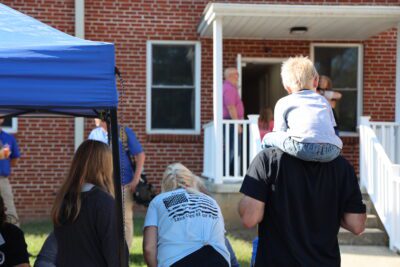

OFES’ current building opened in 2020 and was constructed outside of the 500-year floodplain. In order to mitigate future flooding, they reinforced the creek, and the county has taken preventive measures upstream.
OFES received new flooring, doors, HVAC systems, a fresh coat of paint, and more. PGES — having held a larger student body than usual for a year — received new flooring, new paint, and a resurfaced parking lot.
At OFES, the new HVAC units were installed higher than before to prevent damage should the school ever experience flooding again.
“One of the promises we made (to OFES families) is when we put you back into the school, it’s going to be as good, if not better, than it was. And I feel like that promise was absolutely kept,” Grit said.

Post-Helene, displaced OFES families were eager to learn information about their children’s school. Grit had monthly updates for families at board meetings to show the progress being made at the OFES building. William Kehler, the director of McDowell County Emergency Services, was using the county communication channels to relay updates about the school and other community projects.
School board members fielded a lot of calls from the community, Grit said. Once the building was safe to enter, Ward brought people into the school to see the improvements.
Grit, Ward, and MCS were able to meet their goal, and Old Fort students were welcomed back into their building on Monday, Aug. 25 — just in time for the first day of school.
“I love these people, and I love this place, and I love these kids, and I love these families,” said Ward on the first day of school.
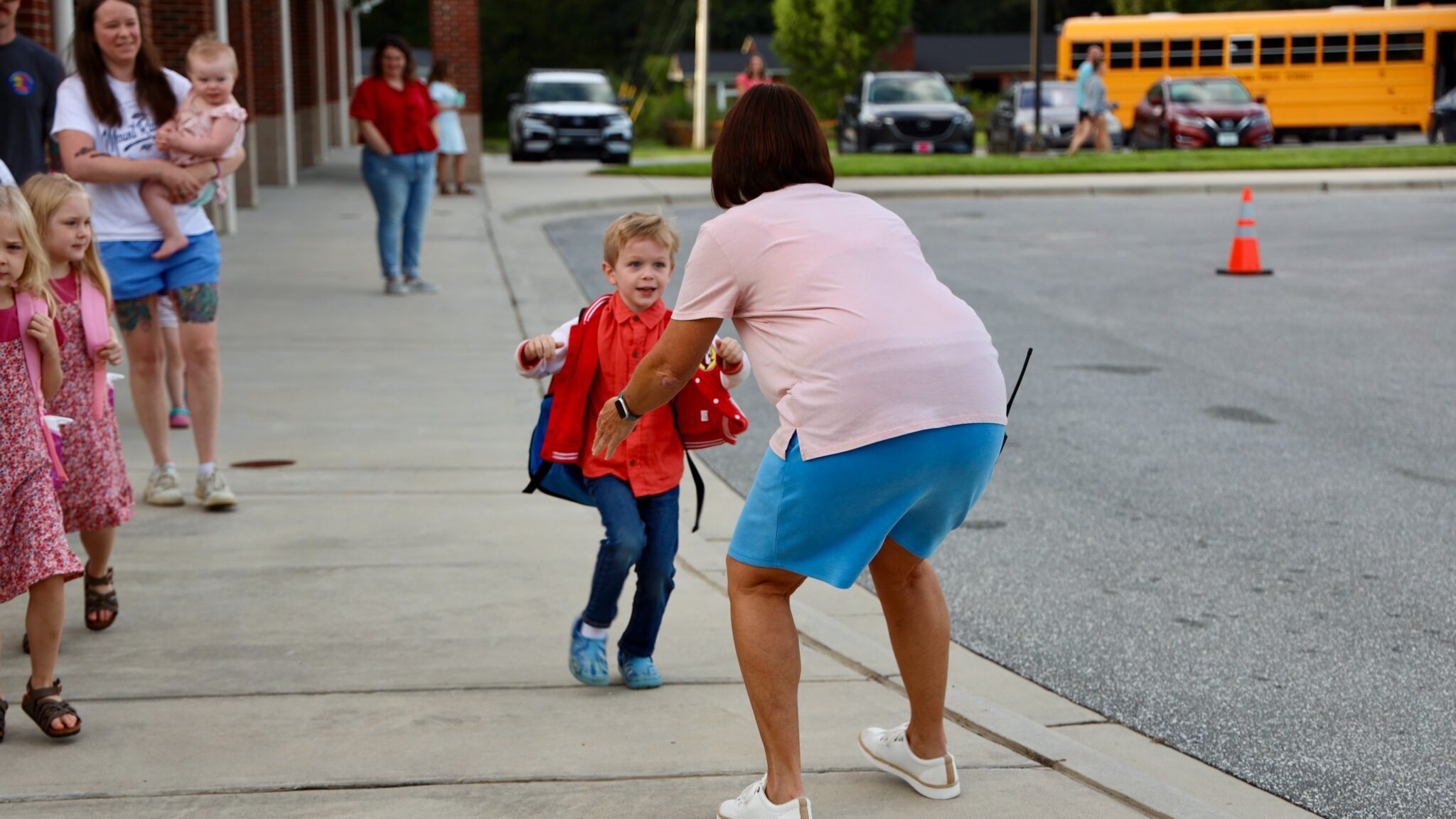
Watauga County
Part of Valle Crucis School was constructed in 1935 thanks to the New Deal Works Progress Administration (WPA). The original building held six classrooms, and over several decades, the school expanded to become 66,000 square feet. It serves kindergarten through eighth grade students.

On Sept. 27, 2024, water entered Valle Crucis School and eventually flooded around 70% of the building.
It’s been almost a year since Helene, and Watauga County Schools Superintendent Dr. Leslie Alexander reflected on the expression “Mountain Strong” — of which she says the Valle Crucis community is a living testament.
“It’s a real thing,” she said. “That principal and that staff has really just — they’ve been remarkable.”
For the remainder of the 2024-25 school year, the Valle Crucis School building was closed and students were housed at three different community educational institutions. Appalachian State University (ASU) had one preapproved classroom to take the preschoolers. Valle Crucis Conference Center and Holy Cross Episcopal Church welcomed K-5 students, and Caldwell Community College and Technical Institute (CCCTI) housed the sixth through eighth graders.

Before the storm, a new Valle Crucis School was already under construction a quarter-mile down the road from the original building, and had plans to be complete by the end of 2024.
Helene delayed that opening, and then the district had hopes to open at the start of the 2025 school year, but missed this goal because of an overstretched construction workforce in the region.
Alexander remembers getting the staff together with Valle Crucis Principal Dr. Bonnie Smith this summer to let them know the school opening was going to be delayed further.
“They just put their best foot forward, and they said, ‘We’re going to take care of these babies and we’re going to get through this,'” she said. “I really could not ask for a better attitude from folks that I have the pleasure and opportunity to get to work with.”
The only change from last year is that the preschool students moved back to the district, joining up with Cove Creek School.


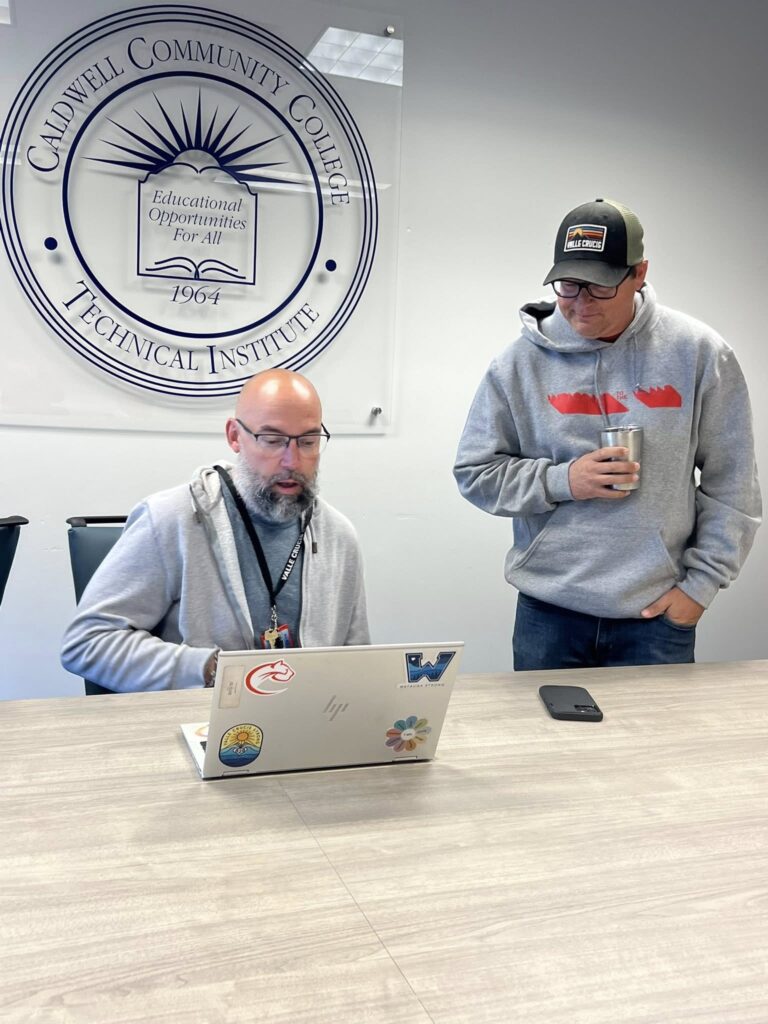
Since the storm, the community and the entities housing students have only deepened their relationships. Alexander said CCCTI has declared that any middle schooler from Valle Crucis who joined them after the hurricane would be able to attend the community college for free, should they choose to go that route after high school graduation.
For Alexander, physically finding her staff in the immediate aftermath of the storm was the most challenging part, both emotionally and literally. If there is an emergency again in her area, she now knows the critical role of satellite phones, which can keep her school community connected if cell service fails. During the storm, contacting staff who then got in touch with students and their families was the most important part. Alexander feels good about how the district managed.
The 20,000 square feet of the historic Valle Crucis School that remained dry during Helene was the original rock facade. The school district is still working with FEMA and insurance to see what funding might be available to save the beloved part of the building.
Alexander said Watauga students missed 17 days because of the hurricane, and on top of that, 21 additional days because of inclement weather. She is constantly amazed by her district staff for their attitudes and ability to continue teaching regardless of circumstances.
Yancey County
At 30.78 inches in four days, Busick is on record as receiving the most rain brought about before and during Helene.
“We had water in places that we had not seen water in our lifetime,” said Yancey County Schools (YCS) Superintendent Kathy Amos.
The damage to infrastructure impacted electricity and water access countywide, roads and bridges were washed away, and cellphone service was nonexistent for a period. YCS students were out for seven weeks.
“I think it was just the overall amount of devastation — it was on every roadway, (in) every community,” she said. “It was just our entire county and the loss of homes and the damages, the amount of debris.”
For Amos, that was the most challenging part initially.
Micaville Elementary, another WPA historic stone school, served 198 students before the storm. The building flooded due to the record-breaking rainfall, and the decision was made that the school would close permanently. Forty-eight students moved to South Toe Elementary and the remaining 150 moved to Burnsville Elementary School.
Yancey County Helene stories

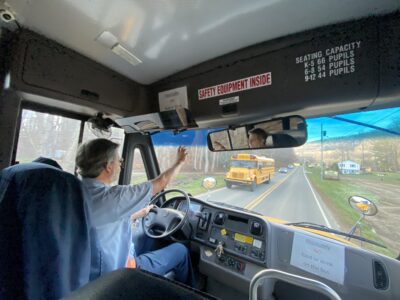
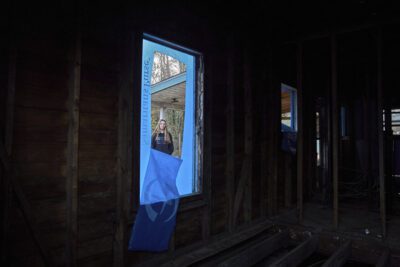
Expansion plans were put in place to add 14 classrooms to Burnsville Elementary and 12 classrooms to the third elementary school in the district, Blue Ridge Elementary School.
Burnsville’s classrooms were ready for the 2025-26 school year, and Amos expects Blue Ridge’s expansion to be complete in December of this year. Melanie Bennet was the principal at Micaville Elementary, and she has been named the new principal at Blue Ridge Elementary.



In the aftermath of the storm, with cellphone systems down, Amos and the district used local radio waves to communicate. She engaged the AM/FM radio station in town and reported out to YCS families every Thursday on the status of the school system.
Each school now has a Starlink to help with connection, but YCS leadership decided to continue internally with a radio communication plan for any future weather events — administrators will use bus radios to stay connected and make school closure calls.
Infrastructure, both in the county and on school campuses, is still a concern for YCS. Thanks to last year’s flooding, there were slope failures around the county, which destroyed vegetation that typically would have helped soak up water. The quantity of water that fell during Helene changed how water flows around the county and created drainage issues on campus.
“Anytime we get a heavy rain, you know, three to four or five inches of rain in a short amount of time, it creates problems,” said Amos.
They have drains on some campuses that have been sinking, and they continue to repair gutters and remedy any mold issues.
Amos commends her team for continuing to work through the FEMA process by providing documentation, inspections, and all the detailed information that is required for submission.
Mountain Heritage High School’s building is 49 years old, and it is the only high school in the county. Once the storm hit, it was an emergency command center with food and supply distribution, and it housed 300 people.
All of YCS campuses need funding to update facilities, to mitigate future issues, and to prepare for the incoming student population. The district has a strong pre-K and kindergarten class this year, and people are moving to the county, Amos said. The school board remains focused on long-term facility plans.
“I really thank everyone for helping us through those challenging times,” Amos said. She is speaking to the volunteers who came to help, the donations sent from across the country, the grants received, and the continuous prayers for her community.
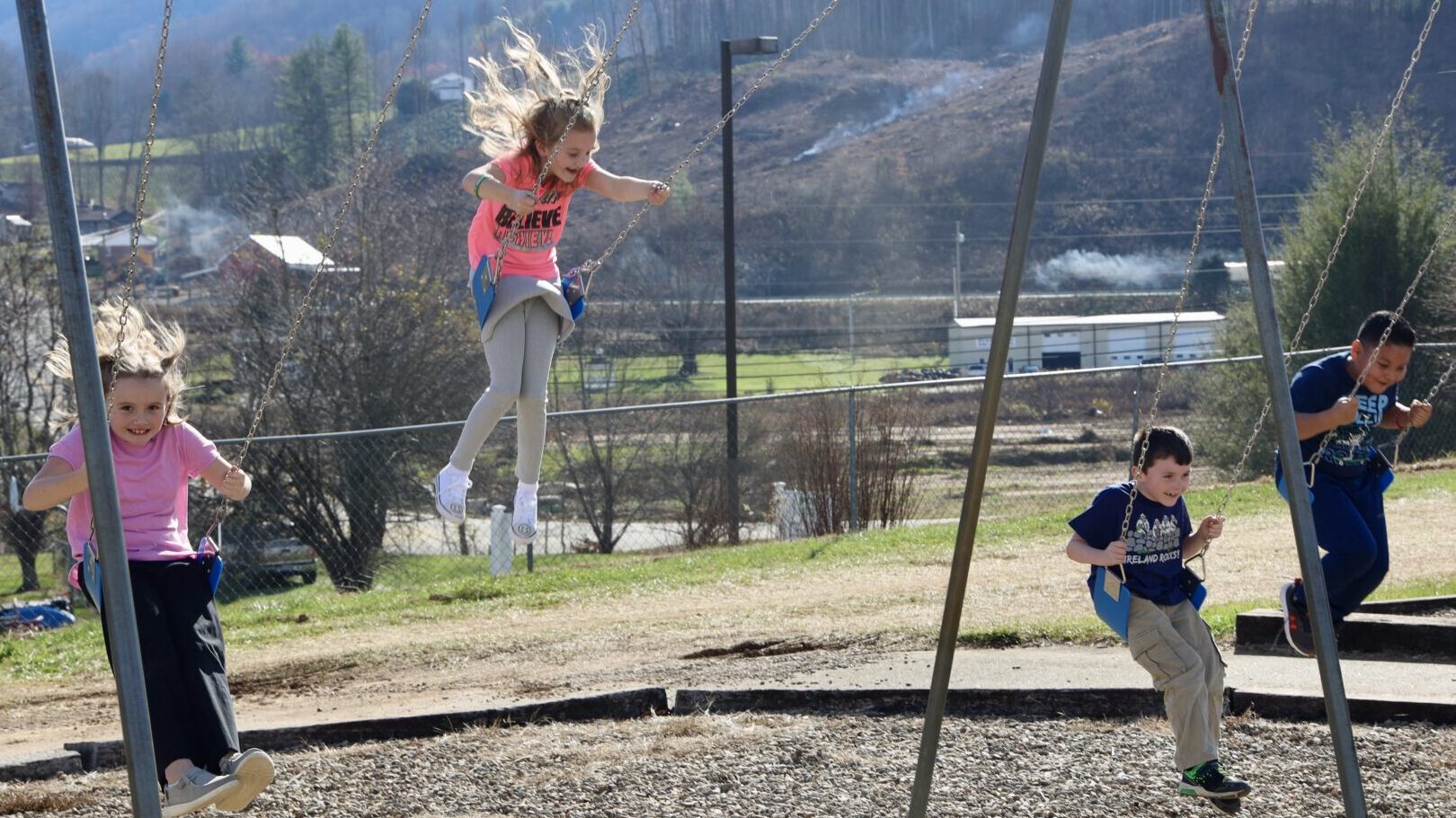
Amos knows the journey is long, but she sees a light at the end of the tunnel. She saw it on the first day of school.
“We’re just thrilled to have our students and our faculty and staff in a safe and beautiful environment. You know, to teach them — learning and growing. And for that, we’re very grateful, and I feel like the school year is off to good start.”
Kathy Amos, superintendent of Yancey County Schools
Editor’s note: The N.C. Press Association has awarded EdNC its public service award for our coverage and strategic support of western North Carolina after Hurricane Helene. You can see all of our coverage here.
Recommended reading



